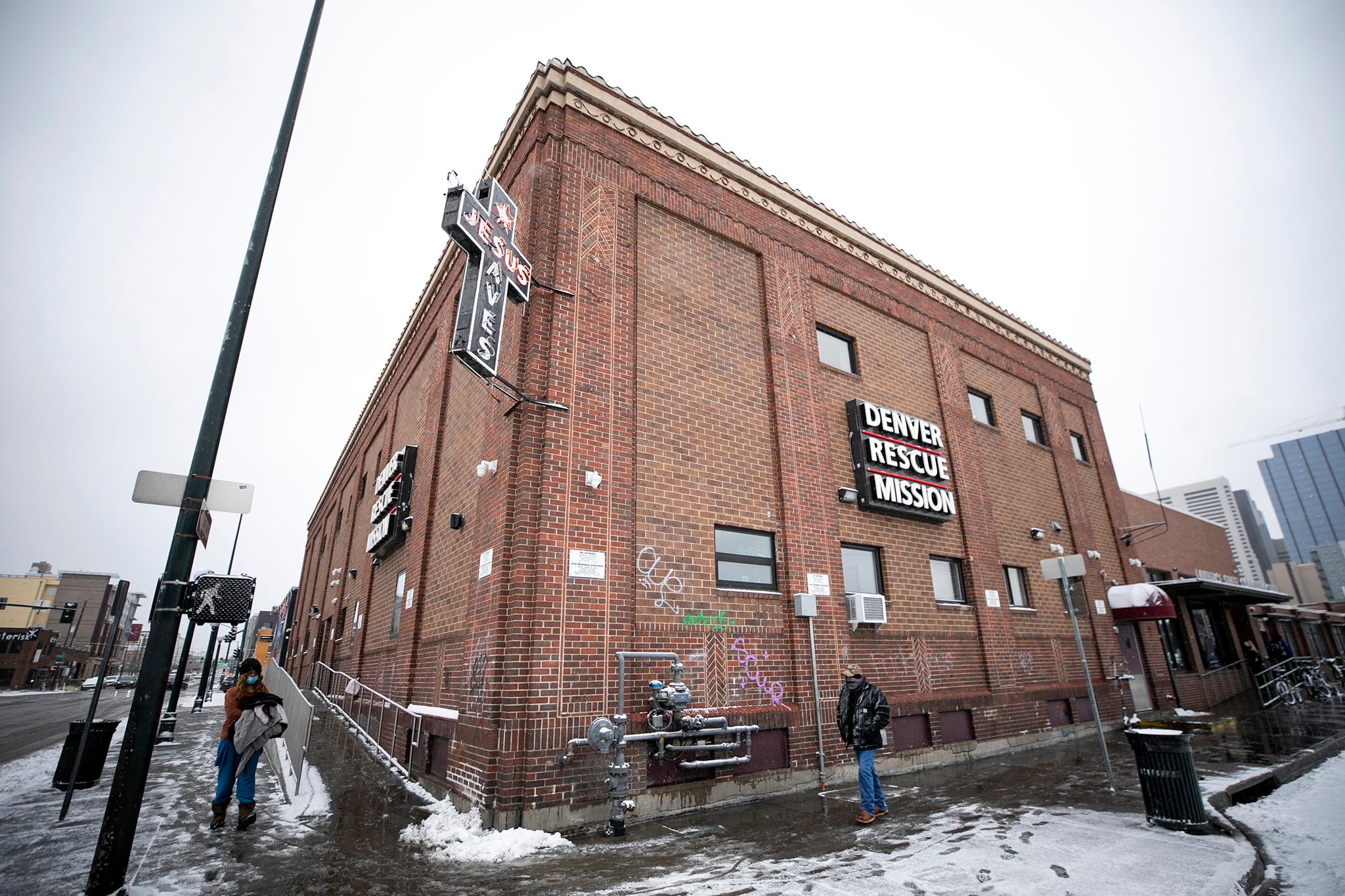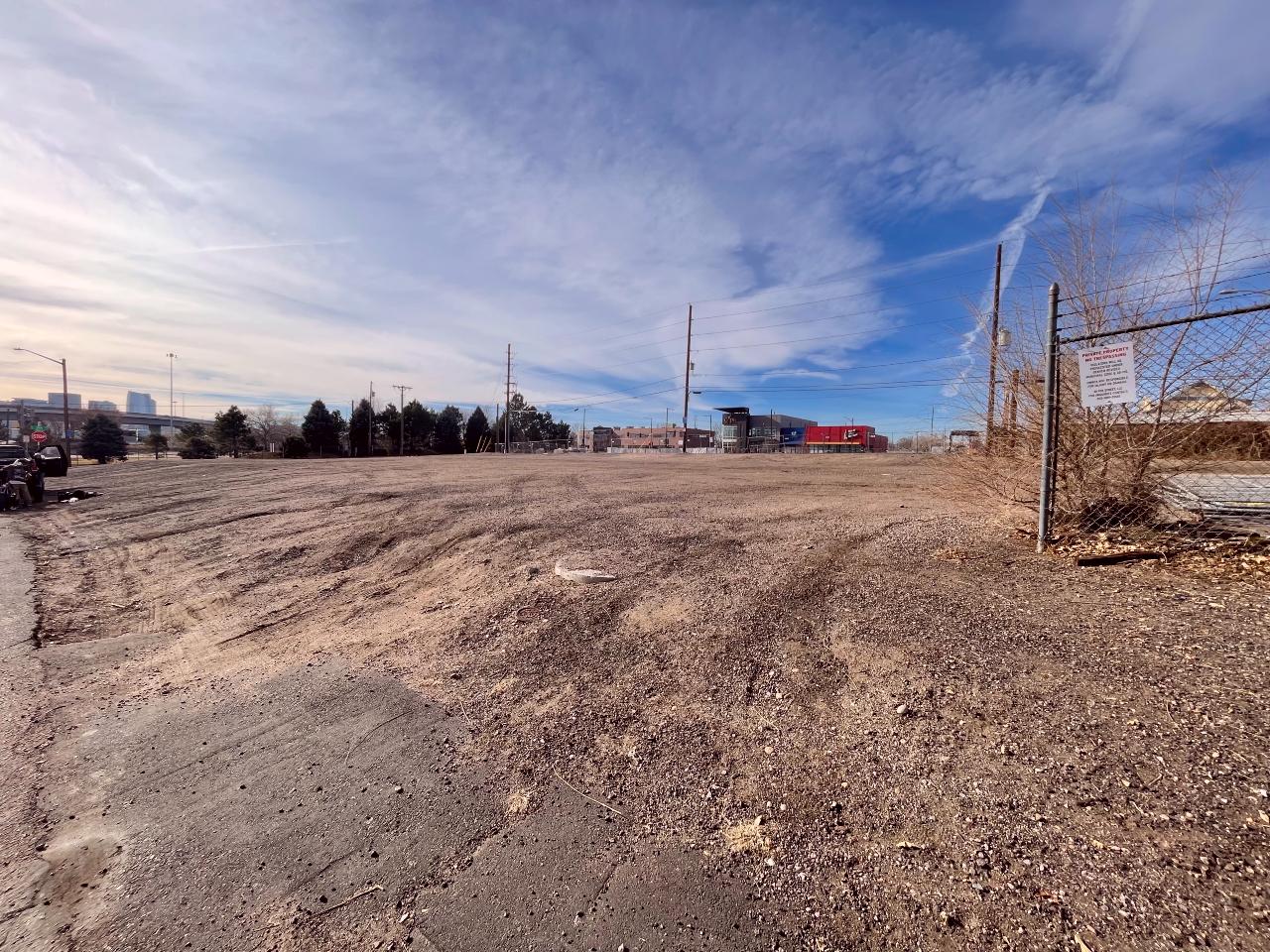President Donald Trump’s new executive order is a direct attack on some of the strategies that Denver leaders have embraced in their fight to end unsheltered homelessness.
The order, called “Ending Crime and Disorder on America’s Streets,” attempts to defund “housing first” and “harm reduction” approaches to homelessness. Both strategies have played heavily in Mayor Mike Johnston’s housing efforts in Denver, and many researchers say they are backed by evidence.
The new order “prioritizes criminalization and involuntary civil commitment of those forced to live on the streets due to the federal government’s failure to invest in housing solutions that could have solved homelessness decades ago,” the Colorado Coalition for the Homeless wrote in a statement on Friday.
Trump’s order says that cities should force people experiencing homelessness into treatment for addiction and mental health issues. It attempts to end the practice of providing housing to people who can’t or won’t enter treatment programs.
The order also would defund harm reduction strategies, like local programs that provide clean syringes for people who use drugs. And it would punish cities that embrace housing first and harm reduction with civil and criminal investigations and sweeping funding cuts.
“His approach to the street folks is, ‘We'll put you in institutions,’” said Don Burnes, the co-founder of the Burnes Center for Poverty Research at the Colorado Center on Law and Poverty. “And the problem is that we don't have enough of those institutions.”
If implemented, the order could trigger sweeping federal funding cuts to Denver’s current homelessness and public health strategies— the sort of budget fallout the city is already fighting in multiple lawsuits over other executive orders.
Mayor Mike Johnston defended Denver’s efforts, saying in a statement that the city had provided a “a blueprint for how cities across the country can address this crisis that to many seems unsolvable.”
He welcomed anyone, including Trump, to come learn “best practices for tackling the issue.” But in a recent speech, he also implied the city could embrace at least some of the strategies Trump is now ordering.
How Trump’s homelessness order could affect Denver
Housing first has been central to Denver’s approach to homelessness in recent years.
Since Johnston took office, the city has spent millions bringing thousands of people living in tents indoors. Many went into hotel shelters, where they have stayed for months or years. The city has largely eliminated large outdoor encampments, which Johnston described as “historic” but imperfect progress.

The city is still evaluating how the order could affect funding for its programs — and there may well be lawsuits to stop the order.
The new order is meant to address what the president describes as “endemic vagrancy, disorderly behavior, sudden confrontations, and violent attacks have made our cities unsafe.”
Trump’s order would use the threat of criminal sentences and law enforcement to push people into treatment.
Trump has asked federal agencies to prioritize funding for cities that:
- enforce laws on open drug use, urban camping and loitering, and urban squatting.
- jail people and mandate treatment if they are a danger to themselves or others and suffer from mental illness or substance use disorders, or live outside and cannot care for themselves and force them to go through either out-patient or in-patient treatment.
- track people who are homeless and on the national Sex Offender Registry.
The order also proposes using federal tax dollars to remove encampments when local resources are inadequate, and it suggests people are placed in private housing.
What the research says about housing first
In his order, Trump derided strategies like Denver’s.
“The Federal Government and the States have spent tens of billions of dollars of failed programs that address homelessness but not its root causes, leaving other citizens vulnerable to public safety threats,” the order states.
The city is still wrestling with significant problems in and out of the shelters. Overdoses, homicides and accidents have occurred and medical care has been unevenly funded by a city that has lagged in contracting with service providers. Most people brought into hotel shelters have still not found permanent housing, and 47 percent have experienced unknown or negative outcomes: death, jail, or a return to the streets.

But other people living outside went straight into long-term housing – long considered the gold standard by homelessness researchers. From a stable base, a person has an easier time making doctors’ appointments and recovery meetings and getting a job, researchers say.
Over the years, Denverite has spoken to dozens of people with conditions like schizophrenia, bipolar disorder, alcohol, meth and opioid addiction who say they willingly accepted treatment after finding stability in hotel shelters and housing, rather than suffering the trauma of being dragged in and out of jail and punted about on the streets.
These stories mirror research that shows that once people have shelter it’s easier to accept treatment. The vast majority of homelessness experts say that a lack of housing, not a lack of forced treatment, is the primary driver of homelessness, according to Burnes, who has studied homelessness for decades.
“Virtually all studies” suggest housing first works better than programs that require treatment first, Burnes said.
“The problem is [Trump] thinks that substance abuse and mental illness are the root causes, which is why he is taking the position he's doing,” said Burnes. “That's not the problem. The problem is housing, and it's the cost of housing and the availability of units that people can afford, and this executive order doesn't address that at all.”
Johnston says addiction is a critical issue, but it’s far from the only cause of homelessness.
“We need real reform in bringing down the cost of housing and ensuring that folks aren't more than one unexpected expense away from being on the streets,” the mayor said in a statement. “We hope the Trump Administration will join us in prioritizing this need.”
Trump’s plan to end harm reduction
The order also bars federal grants from funding harm reduction programs, widely proven to be effective in preventing overdoses and other harms associated with addiction, and instead forces cities to adopt “evidence-based programs” with solid outcomes.
The federal Substance Abuse and Mental Health Services Administration has long described harm reduction as “evidence-based” in preventing overdose deaths.
More bluntly, Lisa Raville, head of the Harm Reduction Action Center, has pointed out that a dead drug user cannot recover. She is still figuring out how the order might impact her organization, which provides clean syringes and services to active drug users.

Under the order, additional federal funds could be spent on keeping people with mental illness and drug addiction in jail, even when clinical resources are unavailable.
The effects of using the criminal justice system to push people into treatment are unclear.
On its own, establishing harsher criminal penalties does little or nothing to change drug use and other behavior, according to numerous researchers. However, there is more debate about whether it might be effective to give people a choice between jail and treatment.
Over time, some research has shown that “it works to coerce people into treatment,” Carnegie Mellon University researcher Jonathan Caulkins previously told CPR News. “The longer you stay in treatment, the better you do. And if dropping out of treatment means there’s gonna be a criminal sanction, that can be a motivation.”
Still, there is rising criticism among some advocates and academics about the idea that people should be coerced into receiving medical care, Caulkins said. Multiple studies referred to by the National Institutes of Health show the risk of overdose is multiplied when users leave incarceration. And involuntary treatment may also increase the risk of overdoses.
Meanwhile, even as Trump pushes for a crackdown on addiction, ,his administration has delayed and may cut $140 million in federal funding to address the fentanyl overdose crisis, NPR reported.
Leaders in both parties have proposed mandated treatment and “tougher” approaches to homelessness
The order may represent a return to the practice of institutionalization.
Prior to the 1980s, many more people were locked up in psychiatric institutions. Widespread reports of abuse, neglect, and poor conditions helped fuel the deinstitutionalization movement, which aimed to get people into community-based care instead.
But while many institutions were closed, there was not nearly enough housing and care facilities to replace them — contributing to a rise in homelessness among people with serious mental illness. Countless people ended up on the streets, incarcerated, or cycling between the two.
Homelessness rose dramatically again after the pandemic, and images of desperate people have gone viral week after week in Denver and other cities.
In response, some Democrats have been embracing this vision of “tough-on-crime” solutions to homelessness. California Gov. Gavin Newsom demanded cities and counties “take back the streets” and shutter encampments.
Mayor Johnston has offered mixed messages on the topic.
On Friday, he said the city needs to focus on helping people get into treatment. “But relying on enforcement and the jail system to do this just won’t work – we need federal funding for real, community-based treatment options,” he said in a statement.
However, earlier this week, Johnston said in a speech that the city could use a more punitive approach for people who commit crimes and refuse treatment for addiction and other issues.
“For those who refuse services and continue to commit crimes, we will hold them accountable, and work with our partners in the criminal justice system to direct them toward services and treatment as part of their sentence,” he said.











